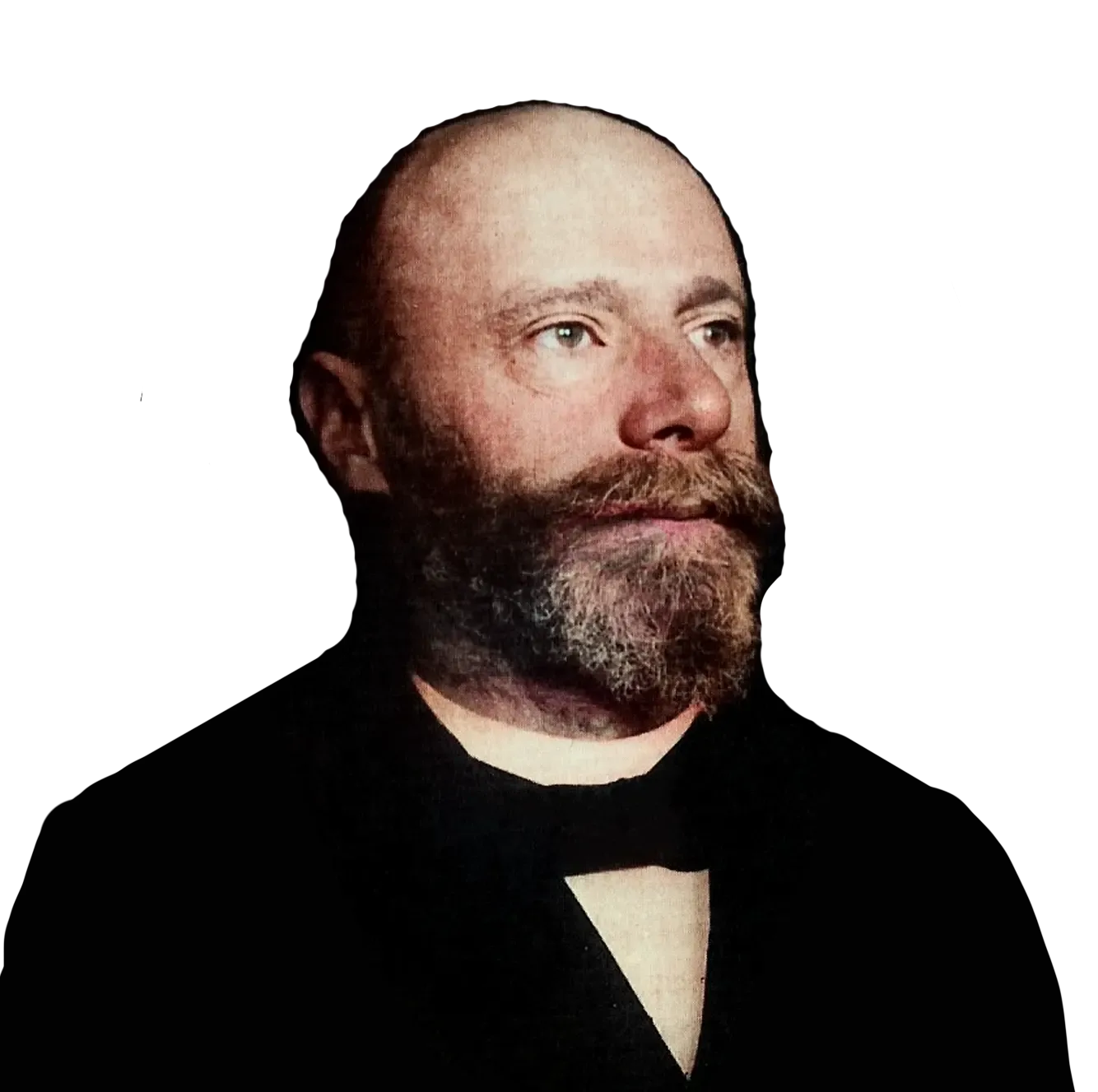This may sound strange, but the heart is a kind of electrical device. The mechanism that the body uses to allow the heart to contract – to ‘pump’ as it were – relies largely on ions, in other words electrically charged particles.
Researchers first discovered the effect of these charged particles in the second half of the nineteenth century. They observed that the heart exhibited a very weak electrical activity on the outside. Leiden Professor of Physiology Willem Einthoven read about this pioneering work and decided to delve into this relatively new area of research himself. His idea was to measure and map the electrical currents of the heart to see whether there was a difference in electrical heart activity between healthy people and people suffering from heart defects.
Kamerlingh Onnes Laboratory
Einthoven was a brilliant researcher, but he had another advantage in addition to his sharp mind: he worked in Leiden. At the time, Leiden University had at its disposal one of the world’s best centres for research in both theoretical and technical physics: the Kamerlingh Onnes Laboratory.
Einthoven was not only a very gifted researcher, he was also an inventive and original technical expert. The electrical currents of the heart are so weak that they were extremely difficult to measure with the instruments of the day. Most of the conductive wires available at the time were so thick that the current could barely find a way through them: the wires offered too much resistance.
Bow and arrow
The only way to solve this problem was to create a much thinner conductive wire, something which no one had yet managed to do. But Einthoven turned out to be a master of what we would now call out-of-the-box thinking. He solved the problem in a highly unusual way: with a bow and arrow.
He attached a lump of melted quartz to an arrow and used a bow to shoot it through the laboratory. As it flew, the arrow stretched the lump into a very thin quartz wire. Einthoven covered this wire with a thin layer of silver and in this way achieved his goal: a much thinner wire that was able to conduct the heart’s weak electrical currents.
This was an important step towards building the first electrocardiograph, which Einthoven finally completed in 1903.
Telephone line
As Einthoven prepared to use his measuring instrument for the first time on a patient, he ran into a new problem. With its 300 kilograms, the device was incredibly heavy and required 5 men to operate; moving the device was therefore impossible.
Einthoven asked for permission to transport a patient from the former Leiden Academic Hospital (AZL), now LUMC (Leiden University Medical Center), to the Kamerlingh Onnes Laboratory. However, the patient was so weak that the director of the AZL refused to agree to the transport.
Once again Einthoven thought of a remarkable solution. On 22 March 1905 he succeeded in sending the heart signal of the patient via a telephone line. In this way, the signal was able to cross the one and a half kilometres between the lab and the AZL. In 1906 Einthoven used this method to make a number of recordings of patients suffering from heart defects.
Nobel Prize
For his pioneering work Einthoven was awarded the Nobel Prize in Medicine in 1924. He died shortly afterwards, in 1927, following a splendid scientific career in Leiden. His most important invention, the electrocardiograph, still saves lives today.
On 9 September 2009, to honour Einthoven and his achievements and in the presence of his descendants, Leiden University officially opened the Willem Einthoven Building, which currently houses the Centre for Science and Technology Studies of Leiden University. In line with Einthoven’s work, this centre combines fundamental research and social innovation.

